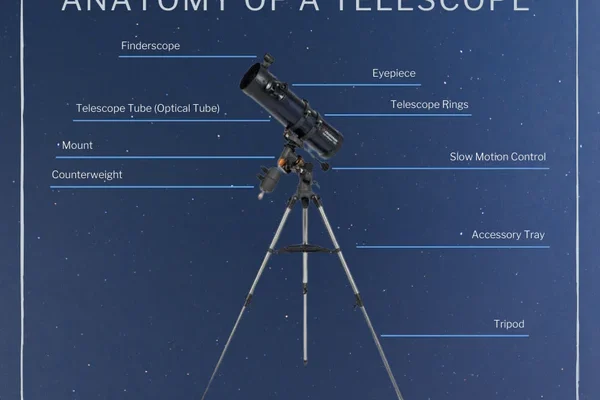How to Use a Telescope: 11 Steps

1. Choose the right telescope: Before you can use a telescope, it’s crucial to select the appropriate one for your needs. There are three main types of telescopes: refractor, reflector, and compound. Each type provides different levels of magnification and is suitable for different uses.
2. Set up a stable surface: Once you’ve chosen your telescope, find a flat, stable surface for setup. This could be a table or a telescope tripod. Ensure the surface is level and secure.
3. Assemble the telescope: Follow the manufacturer’s instructions to assemble your telescope, ensuring all pieces are correctly fitted together.
4. Attach the eyepiece: Most telescopes will come with multiple eyepieces that provide various levels of magnification. Choose an eyepiece with lower magnification (higher number) for a wider view to start.
5. Position the telescope: Point your telescope towards an object (such as the moon) that’s not too bright or too dim in the sky. It’s best to begin with larger objects as they’re easier to locate and focus on.
6. Adjust the focus: Look through the eyepiece and carefully adjust the focus knob until the image becomes clear and sharp.
7. Align finderscope: The finderscope is a smaller sighting device often attached to the side of your telescope. Use it to align with what you see in your main eyepiece by centering the object in both views.
8. Increase magnification: Once you’re comfortable with lower magnification viewing, switch to an eyepiece with higher magnification (lower number) to get more detailed views.
9. Track objects in motion: Keep in mind that celestial objects continuously move due to Earth’s rotation, so you’ll need to manually adjust your telescope as you observe objects over time to keep them centered in view.
10. Choose celestial targets: Experiment by pointing your telescope to view different celestial objects such as planets, star clusters, and nebulae. Many sky map apps and websites can help you locate interesting targets.
11. Practice, practice, practice! The more you use your telescope, the better you’ll become at finding and observing celestial objects. As you gain experience, try observing dimmer objects like distant galaxies or challenging-to-find star clusters.
By following these 11 steps, you’ll be well on your way to becoming a skilled amateur astronomer who can explore and appreciate the wonders of the night sky with a telescope.






